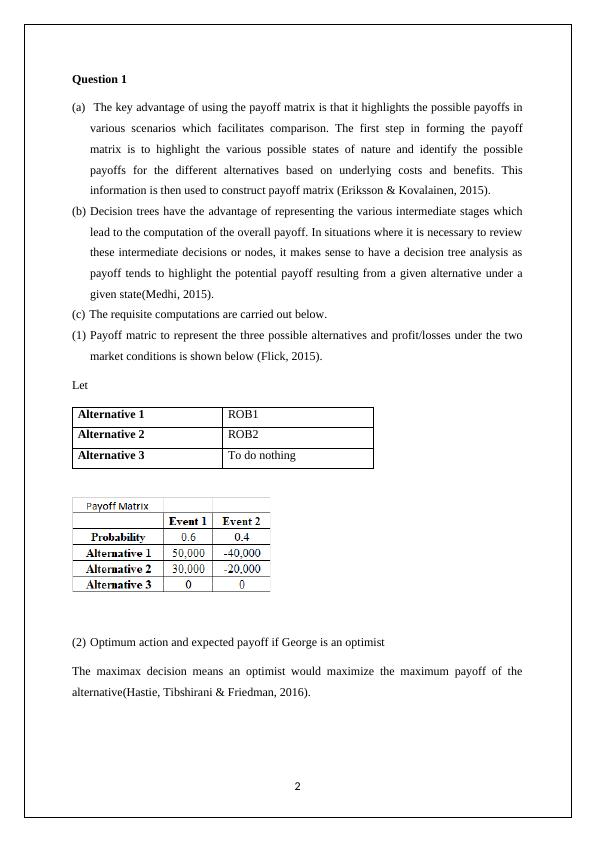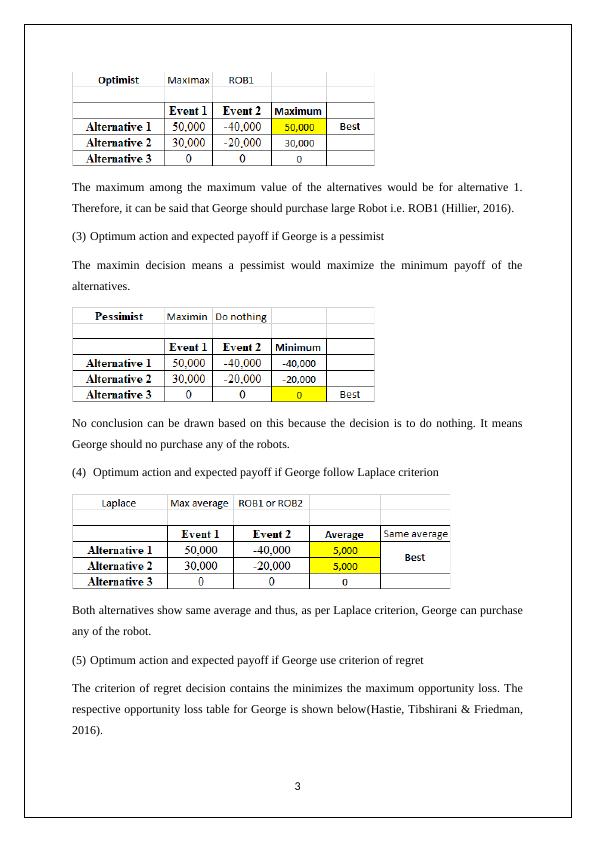Decision Support Tools
Describe the advantage of using a payoff matrix for decision analysis, explain the steps to develop a payoff matrix, discuss the advantages of decision trees and when they are preferred over a payoff matrix, and analyze the profitability of two types of industrial robots in different market conditions.
14 Pages5377 Words493 Views
Added on 2023-04-21
About This Document
This document discusses various decision support tools such as payoff matrix and decision trees. It explains how to make optimal decisions based on different criteria and provides a simulation model for profit analysis. The document also includes examples and calculations.
Decision Support Tools
Describe the advantage of using a payoff matrix for decision analysis, explain the steps to develop a payoff matrix, discuss the advantages of decision trees and when they are preferred over a payoff matrix, and analyze the profitability of two types of industrial robots in different market conditions.
Added on 2023-04-21
ShareRelated Documents
End of preview
Want to access all the pages? Upload your documents or become a member.
Decision Support Tools
|12
|1470
|37
Decision Analysis
|14
|5462
|389
Decision Support Tools
|12
|1601
|98
Information and Decision Analysis
|14
|5606
|55
Decision Analysis and Simple Regression
|14
|5787
|63
Decision Support Tools
|13
|1709
|65




